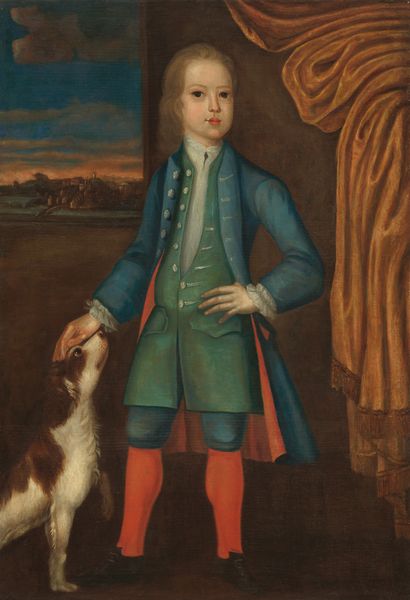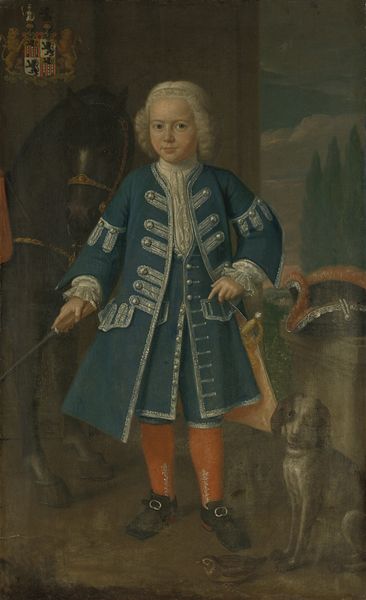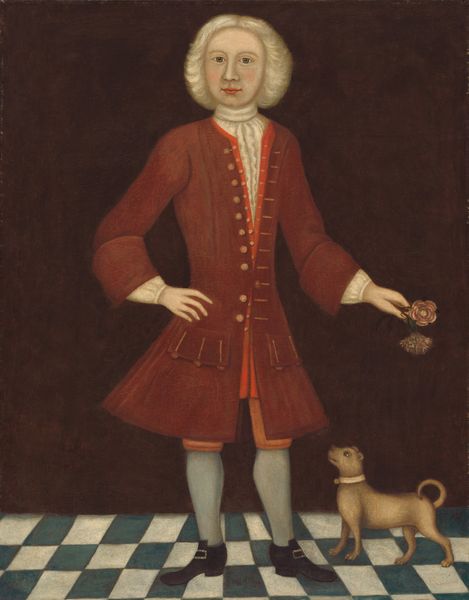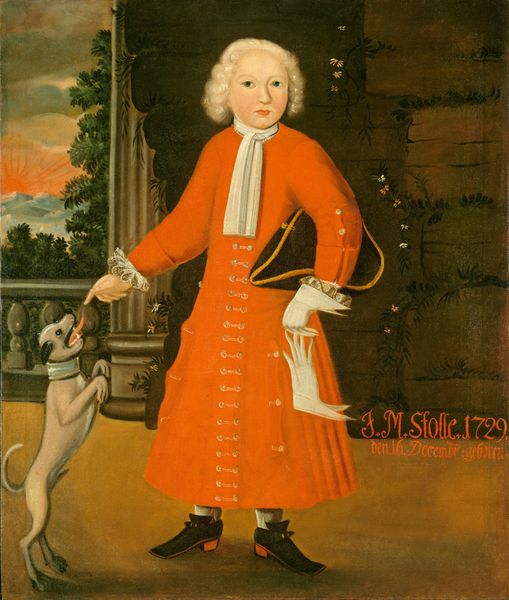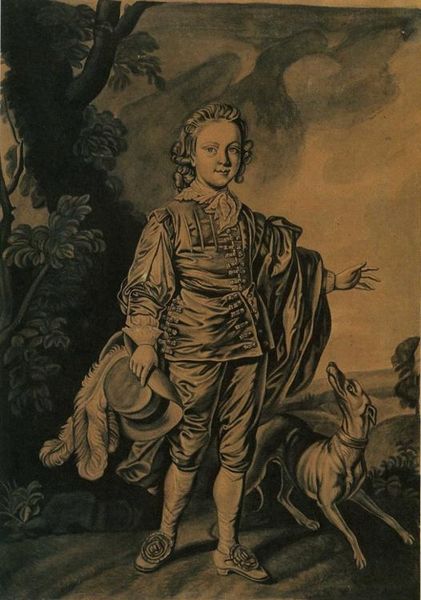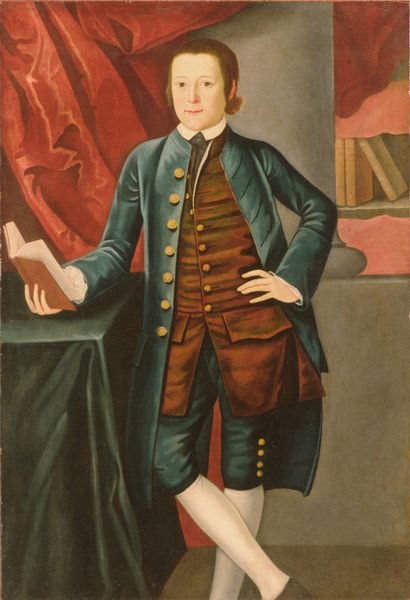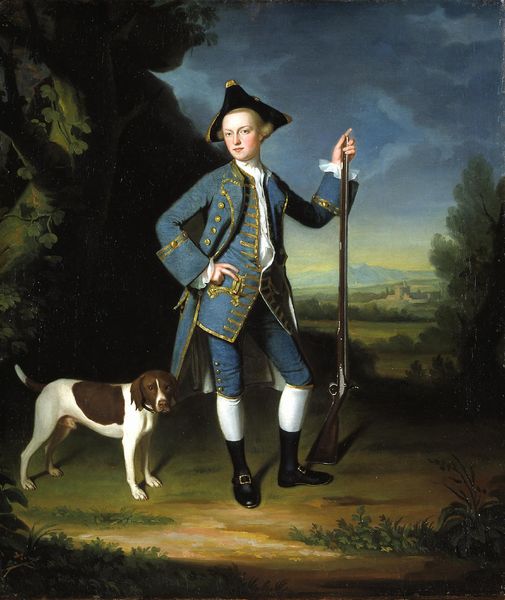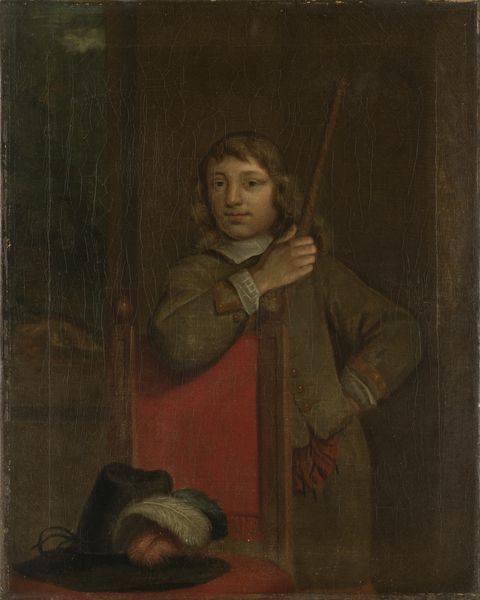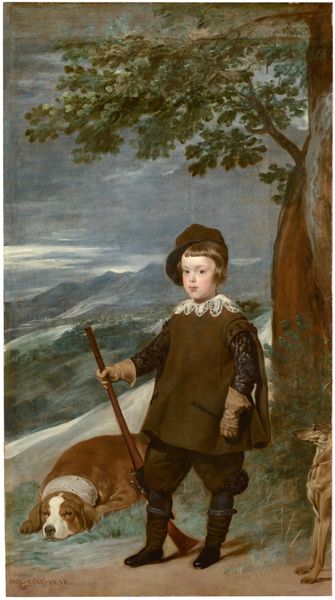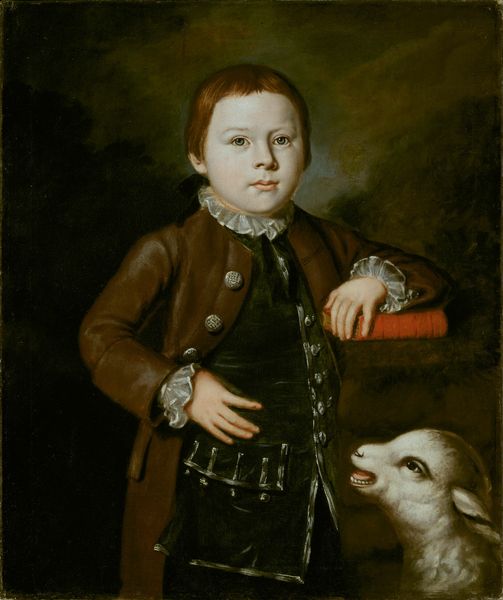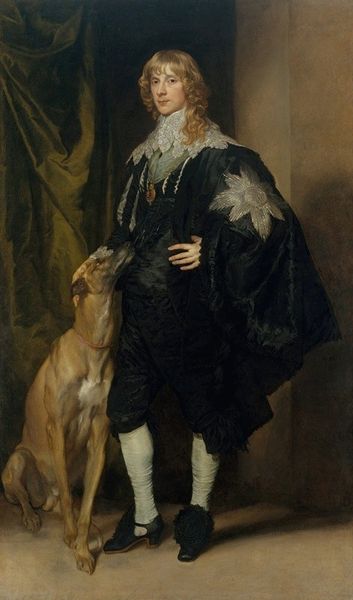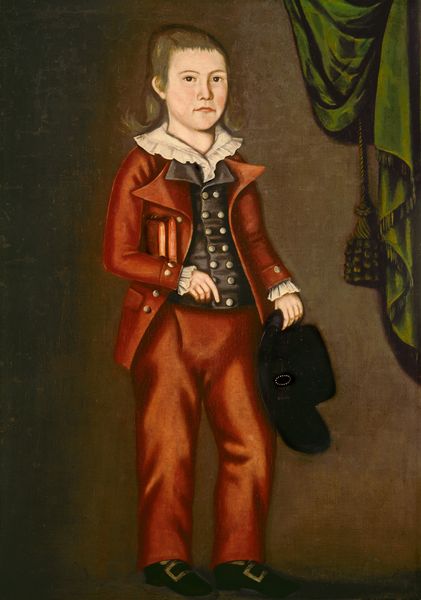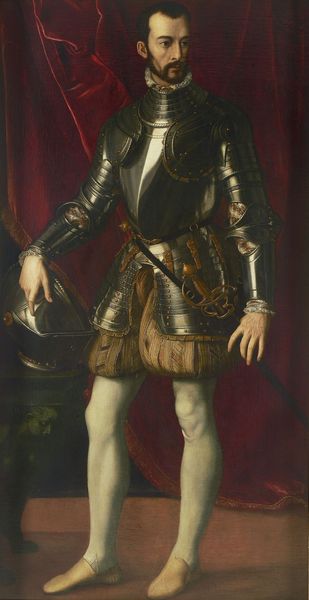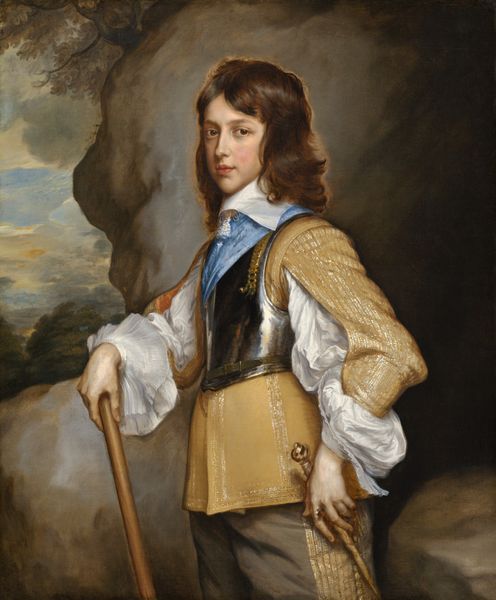
oil-paint
#
portrait
#
baroque
#
oil-paint
#
oil painting
#
group-portraits
#
genre-painting
#
history-painting
Dimensions: overall: 130.8 x 103.6 cm (51 1/2 x 40 13/16 in.) framed: 143.2 x 116.5 x 5.1 cm (56 3/8 x 45 7/8 x 2 in.)
Copyright: National Gallery of Art: CC0 1.0
This portrait of a young boy from the Beekman family was painted by an anonymous artist in the American colonies, likely in the 18th century. The painting offers a glimpse into the world of the wealthy elite in colonial America. The boy's attire, the presence of a dog, and even the bird perched on his finger, all speak to a life of privilege and leisure. Consider the socio-economic context: the Beekman family were prominent merchants and landowners in New York. This portrait likely served as a symbol of their status and aspirations within the strict social hierarchy of colonial society. The stiff pose and somewhat awkward rendering of the figure, typical of early American portraiture, reflect the limited access to formal artistic training in the colonies, and the influence of European models adapted to a new environment. To fully understand this work, we can delve into genealogical records, historical accounts of colonial New York, and studies of early American art. In doing so, we can better appreciate the complex interplay of identity, status, and artistic production in this formative period of American history.
Comments
No comments
Be the first to comment and join the conversation on the ultimate creative platform.
